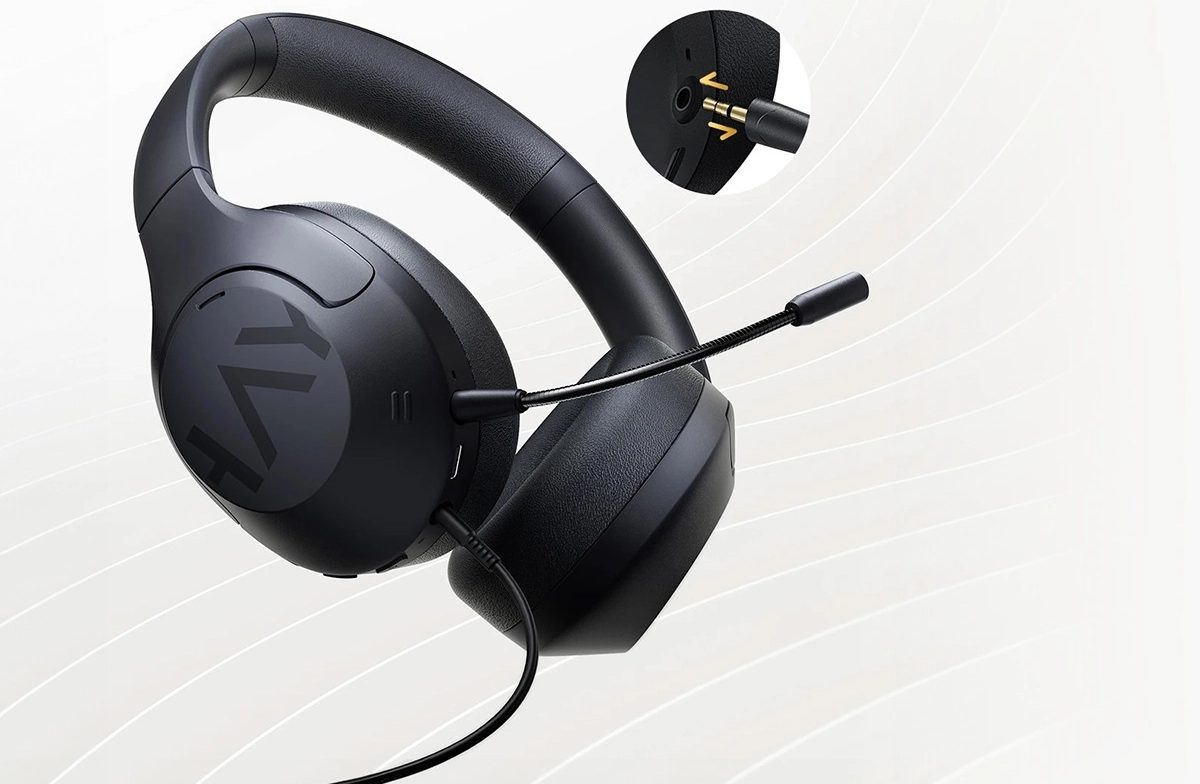The Haylou S30 is proof that you don’t have to break the bank to have a reliable headset that suppresses engine noise in flight. And I know that this has been claimed by many other manufacturers, including Haylou with the S35 ANC, but I flew with the Haylou S30 and I can attest that they work almost as well as the sony WH-1000xm3 ANC headphones.
And it’s not just Haylou, because this year we have also been blessed by SounPeats Space and TOZO HT2, two very valid competitors of the S30. And the Haylou S30 boasts a reduction of up to -43dB, a somewhat strange value considering that the S35 claimed a reduction of up to -42dB.

The Bluetooth Version has also been updated to Version 5.4, which does not really increase the coverage, but should increase the high-speed data transfer cap. But does he really need the Haylou S30? The supported codecs are SBC and AAC, so not really, there is no support for Lossless Audio or equivalent. How is it that Haylou claims that the S30 are Hi-Res Audio certified?
TOZO and SoundPEATS both said the same thing and that’s a way of saying that the wired connection is much better than the Bluetooth connection (we already knew that). However, haylou mentions an Audio sampling rate of 24 bits / 96 kHz and does not specify that the high resolution sound is provided only via a wired connection, which is a bit confusing considering the lack of appropriate codecs for this particular application. Anyway, we get a better battery than the S35 and there is a 360-degree spatial sound effect, so let’s put the Haylou S30 to the test and see how they work.
The design and the manufacturing quality
I mentioned that the Haylou S30 headphones I got are the Pro edition, but what does that mean? There are three levels and the Pro edition means that there is a microphone and a carrying cover in the package, while the basic version only carries the microphone.

The headphones themselves are the same in all editions and are very similar to the S35. I got the black version (there is also an all-white option) and yes, the hinges of the earphone are made of plastic and are designed in the same way as on the S35. the adjustment sliders are mainly made of plastic, but just like the main competitors, there is a metal outer piece that offers additional strength.
The sliding movement is not really the smoothest, but they never got stuck like they did with other headphones. Now let’s talk a little about the headband. I complained that it wasn’t the best on the TOZO HT2 and the SOUNDPEATS room, and honestly, at first glance it doesn’t look great on the Haylou S30 either, but after wearing the headphones for a few hours, it’s not that bad actually. Yes, there are a few pieces of plastic on the sides, but the foam is thicker than this, so you can’t feel it at the top of the head. I didn’t feel them during the time I was wearing them, so there is no pressure point there.
What about the earbuds? They do not press on the sides of the head, and the auricles themselves are a little wider, so they should be able to cover larger ears. The pads can be removed (just use a pry tool), but they remain attached to a plastic frame. So if you want to replace them, this is a somewhat special design. I saw this because the TOZO HT2 and the SOUNDPEATS Space took the same approach. Now let’s talk about the controls. Most manufacturers place all the controls on one side and this is also the cover with the Haylou S30, because everything is on the right earpiece.

There is a USB-C port for charging the internal battery and on one side is the 3.5mm jack for wired connection, on the other side is the 3.5mm jack for microphone extension. There is an LED indicator next to the jack that turns white when the Haylou S30 is turned on and paired, and red when you turn off the headphones. There is also a multifunction button, a single volume button and the ANC button. Yes, the control is a bit unconventional. The volume button increases the volume with one click and decreases it when the button is held down.




